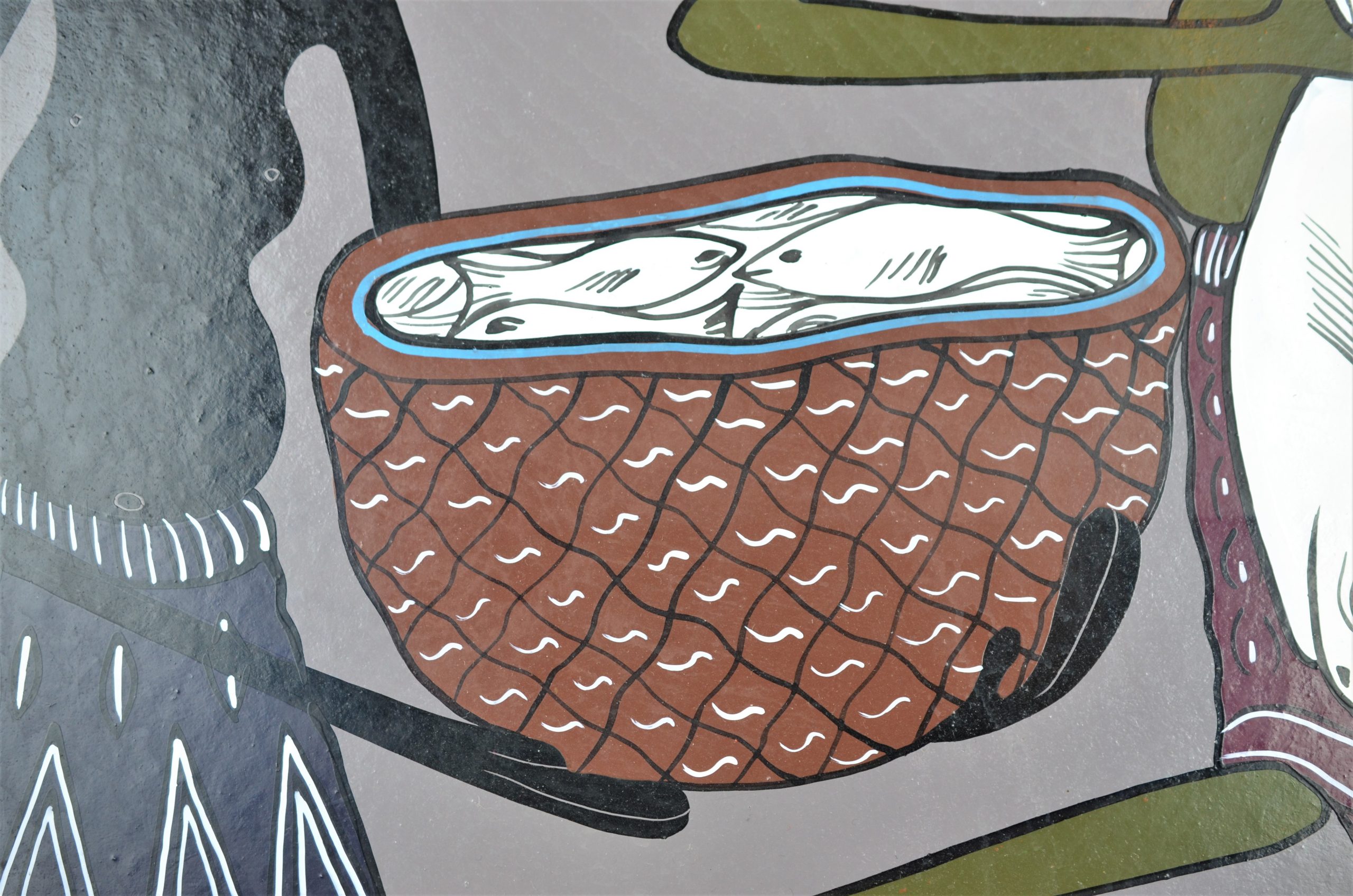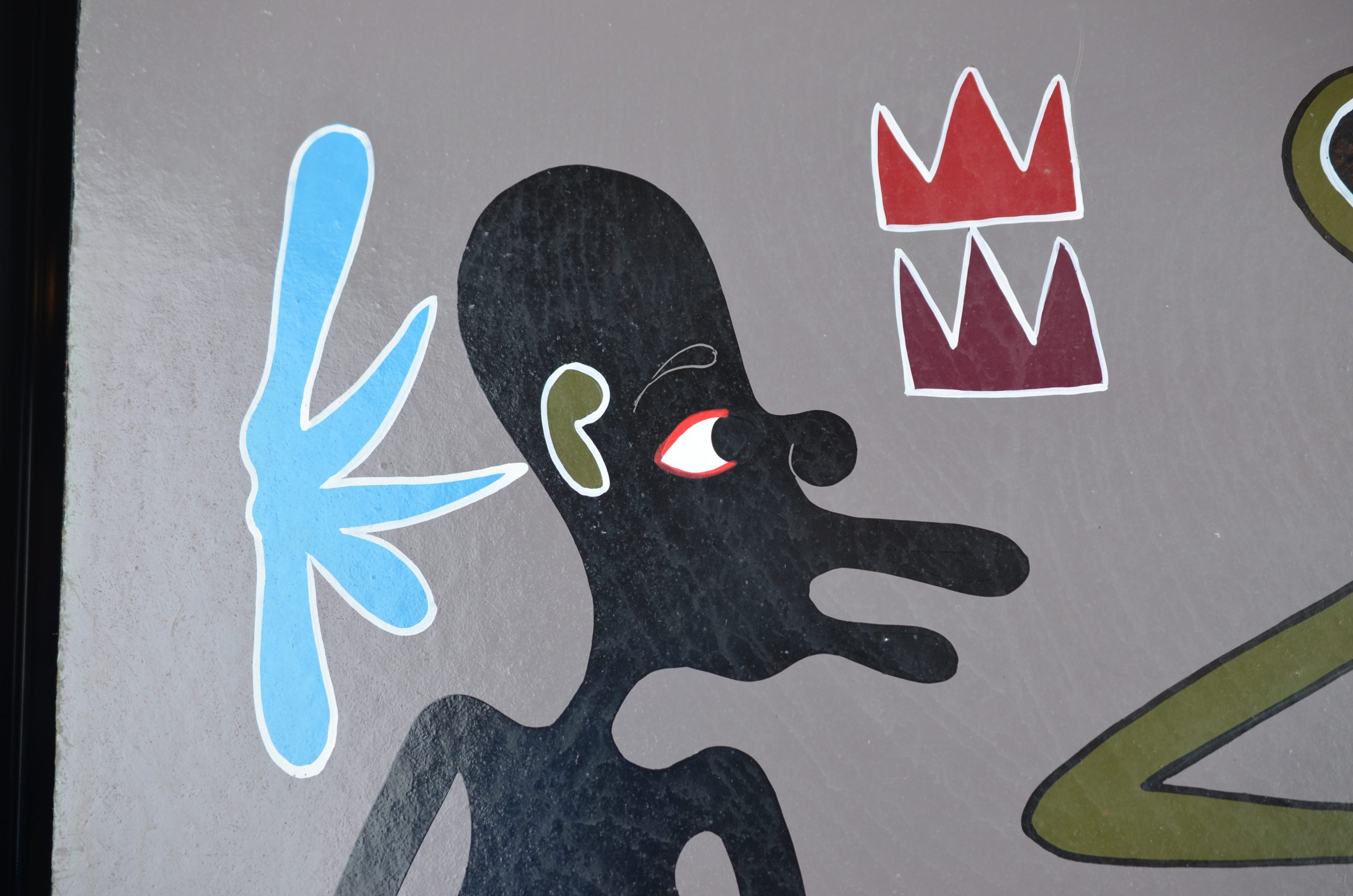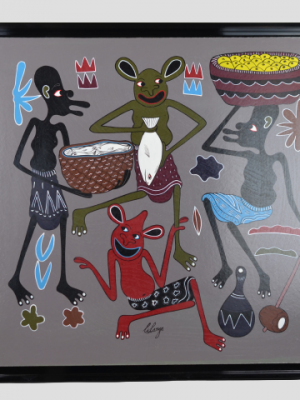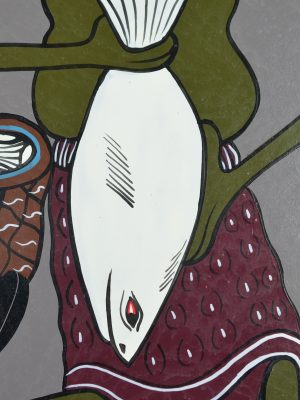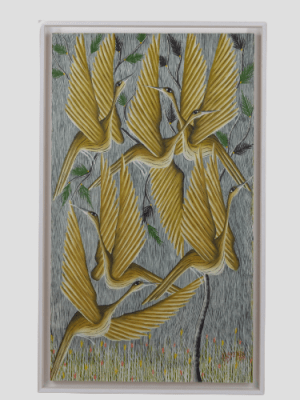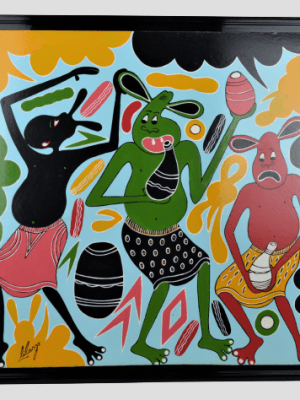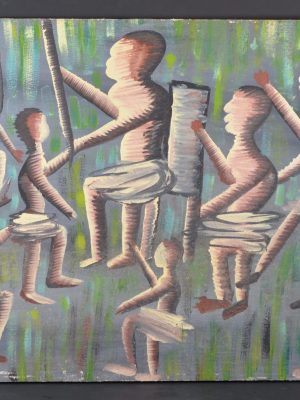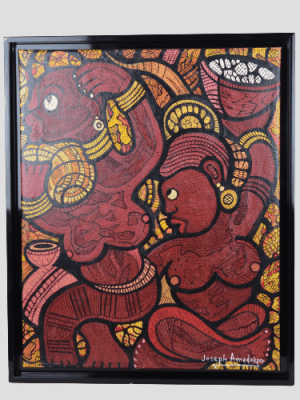George Lilanga - Oil on hardboard - Abundance of food, 1998
Sold
Wingi wa chakula (abundance of food) by George Lilanga. Paint in 61 x 61 cm format on hardboard. Perfect condition and framed in a black lacquered American box by a professional.
Signature lower center. Titled and dated on the back. Sold with its certificate of authenticity.
GO TO THE VIDEO GO TO THE CATALOG
His works derive from the Makonde culture and are subject to a magical thought: ancestors, geniuses and natural forces occupy an important place. They appear as staging of ancestral, mythological or legendary stories, played out by the village or urban population. All of Lilanga's sculptural and pictorial work remains inspired by this culture, nevertheless testifies to a profound revolution which inaugurates the birth of individualization and personal talent in Africa. His polychrome works reveal a highly developed aesthetic sense and reflect a keen sense of social criticism and caricature. Nicknamed "the Picasso of Africa", George Lilanga draws on all these traditions, which he renews in a contemporary context. His compositions left an impression and the recognition he enjoyed did not take long to cross borders.PERSONAL EXHIBITIONS
2002 George Lilanga di Nyama: Mapico Dance, MAMCO, Geneva, Switzerland
2001 Tribute to George Lilanga, Alliance Française, Dar es Salaam, Tanzania
1999 Storie Africane: Georges Lilanga, Galleria Franco Cancelliere Arte Contemporanea, Messina, Italy
1998 Lilanga’s Cosmos, Sudou Art Museum, Tokyo, Japan
1995 Lilanga’s Cosmos, Tama Art University Museum, Tokyo, Japan
COLLECTIVE EXHIBITIONS
2017 Independent, Bruxelles, Belgique
2016 Galeristes, Carreau du temple, Paris, France
2015 La fabrique à fantasmes, Regard sur la collection du musée de Ouidah, Fondation Zinsou, Bénin
2013 Mes Amours…, Bandjoun Station, Bandjoun, Cameroun. Focus sur la collection, Musée de la Fondation Zinsou, Ouidah, Bénin
2012 Haitian Masters & Contemporary African artists, Galerie Lumières d’Afrique, Bruxelles, Belgique
2010 Africa Rising, Société Louis Vuitton, Paris, France. African Stories, Magnin-A, Ancienne Banque du Maroc, Marrakech, Morocco
2009/2010 Africa ? Una nuova storia, Complesso del Vittoriano, Roma, Italy
2009 Against Exclusion, 3rd Moscow Biennial, The Garage Center for Contemporary Culture, Moscow, Russia
2007/2008 Why Africa ? La collezione Pigozzi, Pinacoteca Giovanni e Marella Agnelli, Torino, Italy
2006/2007 100% Africa, Guggenheim Museum, Bilbao, Spain
2005/2006 African Art Now: Masterpieces from the Jean Pigozzi Collection Museum of Fine Arts Houston, Houston, USA National Museum of African Art, Smithsonian Institution, Washington DC, USA. Arts of Africa, The Contemporary collection of Jean Pigozzi, Grimaldi Forum, Monaco
2004/2007 Africa Remix Museum Kunst Palast, Düsseldorf, Germany. Hayward Gallery, London, UK. Centre Georges Pompidou, Paris, France. Mori Art Museum, Tokyo, Japan. Johannesburg Art Gallery, Johannesburg, South Africa. Tingatinga and Lilanga, Kouchi Prefecture Art Museum, Kouchi, Japan
2000 Shanghai Biennale, Shanghai Art Museum, Shanghai, China. Art in Tanzania 2000, Dar Es Salaam, Tanzania
1998 Art in Tanzania 1998, National Museum, Dar es Salaam, Tanzania
1996 Dak’Art 96, Biennale de Dakar, Dakar, Senegal
1995 Africus, Johannesburg Biennale, Johannesburg, South Africa
1993 Haring K. and Lilanga, Pantheon Tama Gallery, Tokyo, Japan Discovery. Contemporary Art of East Africa, Ludwigshafen-am-Rhein Museum, Ludwigshafen, Germany
1992 Out of Africa. The Jean Pigozzi Contemporary African Art Collection, Saatchi Gallery, London, UK
- Dimensions: 61cm x 61cm (sans cadre)
- Epoque: 1998
- Pays: Tanzania









